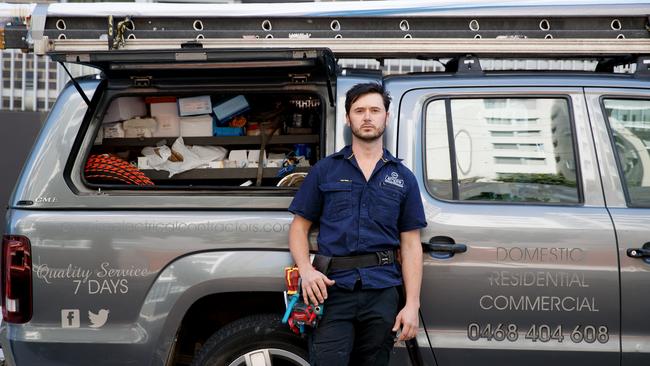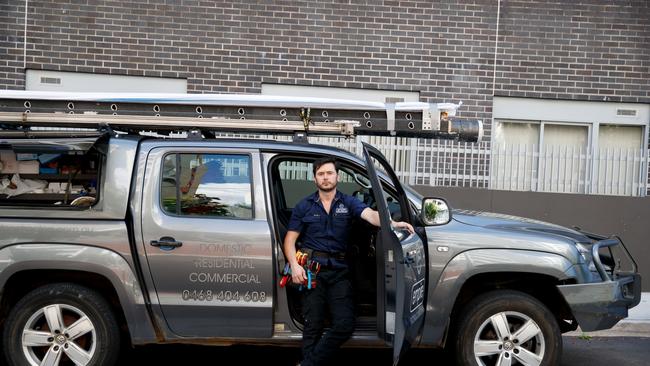Push to stop half of trainee tradies quitting apprenticeships
Low-paid apprentices are turning to charity or selling their cars to make ends meet, a new government report reveals as Skills and Training Minister Brendan O’Connor looks at ways to keep them in training.

Higher wages, completion bonuses and fast-tracked training are on the Albanese government’s agenda to stop half the nation’s low-paid apprentices quitting before they qualify as tradies.
The climbing cost of living is forcing cut-price apprentices to turn to charity for food, sell their cars or move back home with their parents to make ends meet, the federal Department of Employment and Workplace Relations has warned the nation’s training ministers.
More apprentices and trainees have dropped out than graduated – 85,470 completed their training during the 12 months to March while 110,925 cancelled.
Federal Skills and Training Minister Brendan O’Connor is considering extending subsidies and bonuses, in line with the $10,000 payments to 10,000 New Energy apprentices working for “green’’ employers.
An increase to the $12-an-hour starting wage for apprentices, as well as taxpayer-funded bonuses paid to employers and apprentices at the start and finish of training, will be investigated during a month-long consultation with industry. Mr O’Connor is concerned the number of apprentices “graduating’’ in the trades has fallen by more than one third over the past decade.
“(This) is made worse by the tight labour market, where it is often more financially viable to get a job elsewhere than to finish a qualification,’’ he will tell an Australian Industry Group conference on Monday.
“Getting someone to commence an apprenticeship is only half the battle. Completion rates have been steadily declining over the last decade. We know completion rates will get worse before they get better due to pandemic stimulus measures that focused on commencements.
“We need to do better at supporting apprentices to ensure they finish their qualification.’’
Barely half the trade apprentices who started in 2017 finished their four years of training, the latest official data shows, with a quarter of all apprentices quitting in the first year.
One in three apprentices finds the “low level of pay challenging, especially during the first year’’, the DEWR says in a consultation document signed off by federal, state and territory training ministers at their meeting last Friday.
“Apprentices are concerned about low wages and their ability to meet the cost of living,’’ it states.
“Low wages are a barrier to taking up or staying in an apprenticeship. Apprentices reported seeking food from charities, selling vehicles and relying on partner and parental support to make ends meet.’’
First-year apprentices typically earn 55 per cent of a qualified tradesperson’s wage – just $12 an hour for an apprentice hairdresser or $15 an hour for an electrician. Pay rates rise annually, to reach 88 per cent of a tradie wage in the fourth and final year.
Discounted wages make training more affordable for employers who supervise apprentices, and provide on-the-job training and paid time off to attend off-the-job training, usually at TAFE.
The Ai Group wants completion bonuses of up to $5000 paid to employers and apprentices to finish their training. “Continued wage subsidies would help employers and completion incentives or bonuses for both individuals and employers would be of considerable assistance,’’ Ai Group education and training director Megan Lilly said.
The DEWR research found four in 10 employers are concerned about the quality of training their apprentices receive.
The Albanese government is continuing subsidies for first-year apprentice wages, introduced by the former Coalition government at the start of the pandemic.
Labor will now spend $6.5bn over the next five years on wage subsidies, incentive payments, income-contingent loans for apprentices and payments to those who train away from home.
All employers can pocket up to $3500 as a “hiring incentive’’, paid every six months for first-year apprentices. Employers of apprentices in priority occupations can receive up to $15,000 in wage subsidies, set at 10 per cent in first and second years, and 5 per cent in the third year.
Priority trades include butchers, bakers and cabinet makers as well as plumbers, panel beaters, tilers, shearers, automotive electricians and hairdressers.
Sydney electrician Joe Hopkins, who has owned Strathfield-based Empire Electrical Contracts for a decade, said unrealistic expectations of the trade industry and a lack of training were major factors in why apprentices drop out.

He said many young people looking for apprenticeships were vastly ill-prepared for the physical and mental demands of the job and lacked technical knowledge.
“To be honest, a lot of them have no idea how intense and physically demanding these industries are,” he said. “And a lot of these kids don’t have the endurance or resilience to actually perform the hard work with the level of dedication we need.”
Mr Hopkins said the lack of pre-training meant apprentices often were unable to do most basic tasks.







To join the conversation, please log in. Don't have an account? Register
Join the conversation, you are commenting as Logout